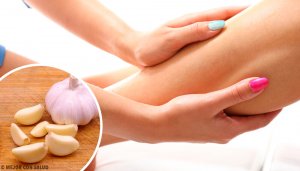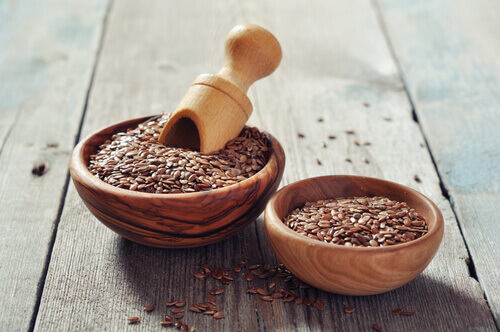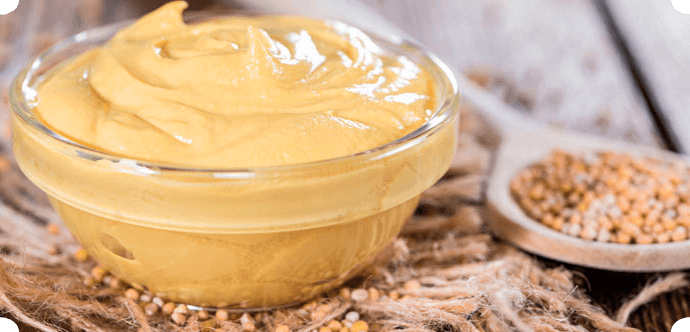Natural Treatments for Fluid Retention

Fluid retention occurs when fluids build up in your body’s tissues. It’s most common in the legs, ankles, and feet, although it can also appear in other parts of your body. In today’s article we’ll tell you about some natural treatments to reduce it.
What is fluid retention and why does it occur?
Fluids naturally build up in your tissues to facilitate organ function. The problem starts when you absorb more fluid than normal. Due to gravity, this excess fluid is typically “retained” in your lower extremities. This condition is typically known as edema.
The most common causes of fluid retention include the following:
- Excessive consumption of sodium or certain medications (such as oral contraceptives)
- Sunburn, or being sedentary for long periods of time
- Heart failure, or liver or kidney disease
- Pregnancy, menopause, or your period
- Problems with the lymph nodes
Fluid retention can appear due to a variety of factors, such as a loss of blood pressure, an obstruction of the lymphatic system, or a change in your tissues’ ability to process fluids.
There are different types of fluid retention. It may be cold or hot to the touch, and the swelling could be generalized (all tissues and organs) or localized (in the legs or ankles, for example).
Tips for treating fluid retention
It’s important that you change some of your habits when you suffer from fluid retention. As a first step, you should increase your water consumption.
Drinking at least two liters a day isn’t an arbitrary amount or merely what’s popular – it’s what your body needs to process toxins and keep your lymph nodes functioning properly (among other things).
When your body doesn’t get the amount of water it needs, it stores what’s available in your tissues – especially in the legs. Observe the color of your urine to find out when you’re well hydrated. If it’s clear it means that you have cleaned out your urinary system completely (for that day, as it will start again tomorrow).
Secondly, it’s a good idea to limit your sodium intake. Sodium is one of the primary causes of fluid retention. You can replace its use with other spices and herbs, and avoid eating any salty, processed, or fried foods.
Visit this article: 6 ways to reduce sodium in your diet
Natural treatments for fluid retention
Here are some home remedies that can be helpful when you suffer from fluid retention:
1. Flaxseed

2. Cilantro
This aromatic herb should always be present in your kitchen, because it adds a lot of flavor to the your dishes. But it has some interesting medicinal properties, too. Cilantro activates kidney function and helps cleanse the body, for example. You can add fresh cilantro to your salads or vegetable dishes, or make a tea using the seeds of this plant.
Ingredients
- 1/2 tablespoon of coriander seeds (5 g)
- 1 cup of water (250 g)
Preparation
- Heat the water in a saucepan.
- When it comes to a boil, add the coriander seeds.
- Simmer for 10 minutes and remove from heat.
- All it to steep for 10 minutes and strain off the liquid.
- Drink this while it’s as warm as possible (and best of all on an empty stomach).
3. Mustard oil

This will help stimulate circulation and your lymphatic system, reducing any excess fluid stored in soft tissues. This treatment is ideal when you get home from work after spending hours sitting in front of your computer.
4. Garlic
This superfood should be in every kitchen thanks to its culinary and medicinal properties. Garlic is a very effective diuretic to reduce fluid retention, especially in the legs and feet.
We recommend that you eat a clove of raw garlic every morning. You don’t have to chew it: you can break it into pieces and drink it with water as if it were a pill. Another option is to add it to salads, casseroles, vegetables, and soups.
Read also: The benefits of black garlic
5. Dandelion

Ingredients
- 1 tablespoon of dandelion (10 grams)
- 1 cup of water (250 grams).
Preparation
- Heat the water in a saucepan until it boils.
- Add the dandelion and simmer for 10 minutes.
- Remove from heat and let it steep for about 15 minutes.
- Filter the liquid and consume. You can add honey or lemon to reduce the bitter taste of the plant.
6. Apple cider vinegar
This can be consumed as a daily tonic to prevent or reduce edema. In addition to adding it to salads and other preparations, some people use apple cider vinegar to apply directly to the affected areas. You just need to soak a cloth in vinegar and exert a little pressure on the legs. The movement must be from the bottom up (that is, against gravity), to cause the fluids to be eliminated through your urine.
All cited sources were thoroughly reviewed by our team to ensure their quality, reliability, currency, and validity. The bibliography of this article was considered reliable and of academic or scientific accuracy.
- Vallo, S., & Bartsch, G. (2014). Edema. In Urology at a Glance. https://doi.org/10.1007/978-3-642-54859-8_7
- Zuk, M., Richter, D., Matuła, J., & Szopa, J. (2015). Linseed, the multipurpose plant. Industrial Crops and Products. https://doi.org/10.1016/j.indcrop.2015.05.005
- Sharma, M. M., & Sharma, R. K. (2012). Coriander. In Handbook of Herbs and Spices: Second Edition. https://doi.org/10.1533/9780857095671.216
- Bayan, L., Koulivand, P. H., & Gorji, A. (2014). Garlic: a review of potential therapeutic effects. Avicenna Journal of Phytomedicine.
- Clare, B. A., Conroy, R. S., & Spelman, K. (2009). The Diuretic Effect in Human Subjects of an Extract of Taraxacum officinale Folium over a Single Day. The Journal of Alternative and Complementary Medicine. https://doi.org/10.1089/acm.2008.0152
This text is provided for informational purposes only and does not replace consultation with a professional. If in doubt, consult your specialist.








